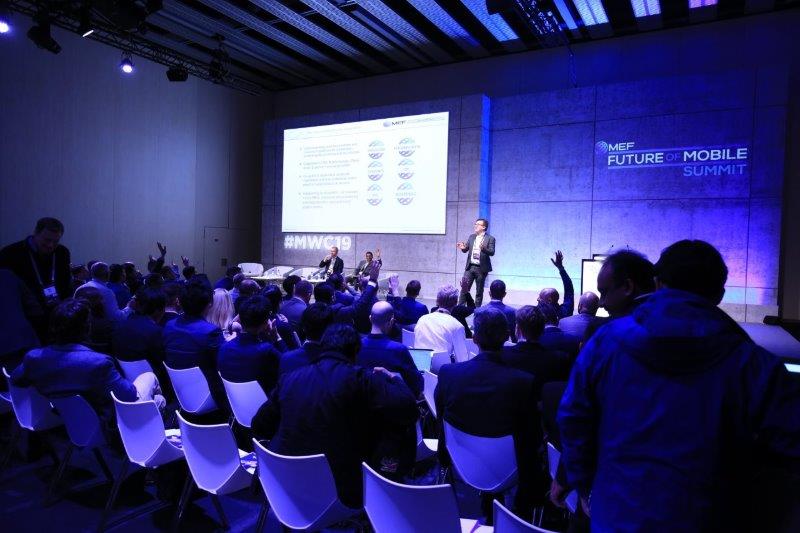MEF’s Riccardo Amati explores how Orange’s strong performance in Africa and the Middle East drives revenue stability and lifts full-year EBITDA guidance above 3%, while Telefonica reports a €51 million net loss due to adverse currency movements and asset write-offs in Latin America, highlighting divergent strategies and evolving challenges in the European and global mobile ecosystem.
Orange SA’s growing strength in Africa and the Middle East contrasts sharply with Telefónica SA’s deepening retreat from Latin America, highlighting a split in strategy that’s reshaping the European telecom landscape.
While Orange lifted its outlook thanks to double-digit regional growth, Telefónica swung to a surprise loss from April to June 2025, dragged down by currency headwinds and asset impairments in markets it’s now exiting. Together, their interim results underscore the rising importance of geographic positioning — and foreshadow a mobile ecosystem increasingly shaped by consolidation, digitization, and uneven regional momentum.
Telefónica’s Painful Pivot: Latin America Exit Weighs on Results
Spain’s Telefónica reported a €51 million net loss in Q2, missing analysts’ expectations of a €104 million profit. Revenue dropped 3.7% to €8.95 billion, pressured by the depreciation of the Brazilian real and the fallout from asset sales in Peru and Argentina. The company booked a €206 million impairment on the Peruvian unit it sold earlier this year and continues to shed its exposure in Spanish-speaking Latin America.
“We keep showing a solid behaviour, which demonstrates resilience and consistency despite different dynamics in the markets we operate in amid an uncertain economic context,” said CEO Marc Murtra, affirming full-year targets and dividend guidance despite the setback.
Telefónica’s core earnings — EBITDA, or earnings before interest, taxes, depreciation and amortization —slid 4.8% to €2.92 billion, with performance diverging across markets: Spain and Brazil saw gains, while Germany and Latin America declined. The company is sharpening its focus on four strategic markets — Spain, the UK, Germany, and Brazil — a move that may limit future downside risk but also narrows its growth runway in the near term.
Orange Leans Into Growth Markets as France Lags
In contrast, Orange SA reported flat overall revenue at €9.94 billion but delivered a brighter message to investors by raising its EBITDA outlook for the year, fueled by robust performance in Africa and the Middle East. Adjusted sales in the region surged 13% to €2.1 billion, exceeding analyst expectations and now representing 21% of total revenue— a notable milestone for the French telecom giant.
CEO Christel Heydemann cited an improving competitive environment at home, telling investors: “We are absolutely confident that the market is moving in the right direction from that standpoint.” France, still Orange’s largest market, saw a 3.1% decline in revenue amid weak wholesale performance. Yet, mobile showed signs of stabilization as rivals, including Iliad, began raising prices and converging mobile/fixed offerings — validating Orange’s long-standing strategy.
Heydemann is also eyeing consolidation opportunities, both domestically — as Orange monitors the potential breakup of struggling rival SFR — and abroad, where the company is exploring changes in its Spanish joint venture MasOrange. CFO Laurent Martinez confirmed that France remains the priority: “We are definitely willing to engage and are actively following the situation.”
Diverging Strategies, Same Industry Pressure
While both companies operate in mature and price-sensitive European markets, their Q2 results highlight sharply diverging strategies. Telefónica is in retrenchment mode, shedding underperforming Latin American assets and attempting to streamline operations around four key geographies. However, the strategy carries costs in the short term, as seen in this quarter’s impairments and currency losses — particularly given the volatility in emerging market currencies like the Brazilian real and Argentine peso.
Meanwhile, Orange is pressing ahead in growth markets, particularly in sub-Saharan Africa and the Middle East, where digital penetration remains low and margins are stronger. The company’s Q2 shows that this bet is paying off, offering revenue diversification and partial insulation from softness in France.
At the same time, both companies face structural industry challenges: margin pressure from OTT (digital services delivered directly over the internet) competition, low ARPU (average revenue per user) environment, and rising capex (capital spending) needs for next-gen mobile networks. These results reinforce the belief shared by many European telecom executives that market consolidation is critical — not just to improve returns, but to build the scale needed for sustained investment in AI, 5G, and future identity-layer infrastructure.
Growth Frontiers
For the broader mobile ecosystem, the message is clear: regional exposure matters more than ever, and operators need scale, flexibility, and innovation to thrive. The divergence between Orange and Telefónica illustrates a pivotal strategic fork — lean into high-growth, under-penetrated regions with long-term upside (as Orange has), or double down on simplifying operations and reducing geographic risk (as Telefónica is doing).
The shift also has implications for digital identity, fraud prevention, and platform economics. As African and Middle Eastern markets leapfrog legacy infrastructure with mobile-first services, Orange is positioning itself as a key enabler of digital inclusion — which could unlock new revenue streams beyond connectivity, including payments, ID verification, and enterprise APIs.
Telefónica, while constrained this quarter, is also building towards a leaner, tech-driven model with greater reliance on network APIs, (Application Program Interfaces) digital wallets, and silent authentication — but its narrowed geographic focus may limit experimentation.
As the second half of the year unfolds, both companies — and the sector as a whole — will be tested by inflationary pressure, regulatory scrutiny, and the demand for faster returns on digital transformation. Yet, with European regulators showing greater openness to M&A and telecom convergence, operators bold enough to lead may finally gain the scale and scope to drive the mobile ecosystem into its next phase.
Both Orange and Telefonica are members of the Mobile Ecosystem Forum (MEF).
MEF Podcasts
For more discussion, interviews and insights subscribe to our three regular podcast channels
Listen Now…










